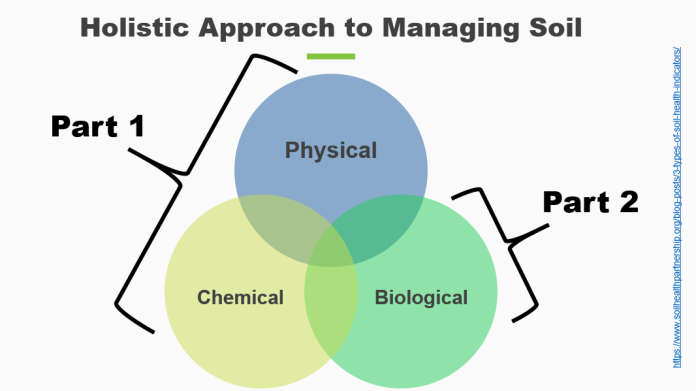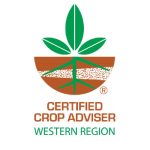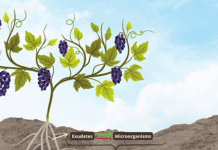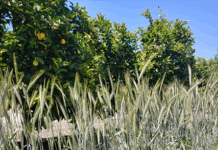
Management practices that improve soil health and soil quality have gained considerable attention over the past few years. If you are wondering how to get started and what to focus on, you have come to the right place! In Part 2 of this article series, I focus on how the living, biologic components of the soil, the microbes, directly impact your soil, including the structure (e.g., aggregation and pore space). My focus on bacteria and fungi in the soil is a perfect complement to Part 1 of this article series, where we explored the physical and chemical components behind soil structure. Part 1 can be found in the January/February 2021 edition of Progressive Crop Consultant.
Let us kick things off with a quick reminder of some terminology and drive home the connection between soil quality (structure) and soil health (biology).
Soil quality: This term has broad application on your farm. Soil quality refers to how well a soil functions physically, chemically and biologically and does its “job” (Figure 1). Many factors influence the soil quality on a farm and are summed up in Figure 2. In this article, we will focus on the biological management practices that maximize soil quality, expressed here as soil structure.

Soil health: This term refers to the interaction between organisms and their environment in a soil ecosystem and the properties provided by such interactions. When you think of soil health, think of the biological integrity of your field (e.g., microbial population and diversity) and how the soil biology supports plant growth.
There is a direct link between soil health (the living component) and soil quality (the structural component). The linkage is fungi and bacteria in the soil and the byproducts they secrete. These byproducts help restore your soil structure (Figure 3). Furthermore, well-structured soils are characterized by excellent soil health, which indicates a feedback loop between the soil biology and soil particles. But how exactly do the microbes put your soil back together?

Glue and Nets
Abundant and diverse soil microbial communities produce lots of “free”services for your farm soil. When your soil is healthy, microbes speed up nutrient release rates back to the crop, influence the water holding capacity of the soil, and help restore soil structure. How exactly do they go about sticking the soil together? The answer can be summed up in two terms: glues and nets.
When you have a healthy and abundant soil bacteria population, they produce a sticky, glue-like gel called extracellular polymeric substances (EPS) that forms a protective slime layer around bacteria as they grow. EPS, since it is sticky, acts as a glue for soil particles, sticking them together and improving overall soil structure.
Another important group of soil microbes, called fungi, is most known by its aboveground structures like mushrooms. However, most soil fungi exist where you cannot see them below ground. In the soil, fungi produce millions of miles of microscopic threads called hyphae. These structures help fungi find resources and grow. The threads also help to capture and tie soil particles together like a net, which improves soil structure. Now that you know the connection between your soil biology and soil structure, let us turn our attention to management practices that can help optimize the contribution of microbes to improving your farm soil (Table 1).
Soil Biology Management Guidelines
Feed the Soil Biology
This might seem like an obvious management choice, but this practice is often missed in the yearly crop plan. Your soil is teeming with fungi and bacteria and they are ready to go to work for you. The problem? They are starving and will go dormant on you until conditions improve. Research shows that farm soils are generally low in the food stuffs that microbes like to eat, and that food scarcity will limit the activity of your soil biology. The answer? Provide them with a regular installment of something they like to eat to keep their populations up. You have many choices, including microalgae, molasses, fish emulsions, etc.
Add Soil Biology
Another option is to add biology to the soil. I do not have space to cover all the products out there, but the main concept is to provide selected species of bacteria or fungi to the soil and put them to work for you. Keep in mind that the inoculant must stay alive to get the benefit you are looking for. This can be quite a challenge considering how sensitive microbes are to changes in temperature and humidity from shipping to storage in the farm shop to field application. If you choose this option, make sure your product is viable and high quality when going out into the field.
Mulches and Compost
This practice is like the first management suggestion but provides more of a “slow release” food source for the microbes. Not all the carbon in plant mulch and compost is available as microbial food. Instead, it must be chemically and physically broken down before the microbes can take advantage of it. Another advantage is that mulches and compost provide a nutrient source to the soil. A potential disadvantage here is that mulches and compost can contain excess salts and weed seeds if not prepared correctly.
Reduce Tillage and Improve Soil Biology
Field activities like tillage can be hard on your soil biology, particularly the soil fungi. For example, when a disk moves through the field, it not only slices through the soil (what you want to happen) but it also slices and dices through all the fungi threads you are trying to grow (what you do not want to happen.) This unintentional result can have a severe impact on the biological contribution to soil structure. Moreover, excessive tillage can crush and compact your soil structure, which can set you back from a physical management perspective. Reducing tillage, therefore, can improve your soil structure on two fronts. Talk about a 2-for-1 deal!
Cover Crops and Soil Biology
The cover crop, usually grown in between the rows of permanent crops (e.g., trees and vines) or in the ‘off-season’ for annual crops, can be used to help feed soil microbes. Cover crop roots secrete carbon substances, called exudates, which can help boost the soil fungi and bacteria when a crop is not in the ground. Keeping your soil alive year-round is key to optimizing the biological contribution to soil quality. Fine root hairs can also tie soil particles together, improving soil structure and quality. Another two-for-one deal!
Testing for Soil Biology
No doubt you are familiar with soil tests from your favorite agricultural laboratory. Traditional soil tests have mainly focused on measuring the chemical constituents of the soil (e.g., nitrate, phosphate, etc.) or the physical aspects of the soil (e.g., soil texture, cation exchange capacity). However, as useful as these tests are, they fail to explain how “alive” the soils are. There is good news though! Many laboratories are starting to offer soil health testing services which can help you get a better understanding of the biological components of your soil. Certified Crop Advisors (CCA) help guide growers through which test to order and, more importantly, help them interpret it. Common tests include measurements of carbon dioxide respiration, extraction of DNA for microbial community analysis and even direct counting of fungi and bacteria populations. There are many choices and sound advice from an experienced crop advisor that can help direct you down the right path and reduce the learning curve.
Conclusion
Biological factors can have a profound impact on overall soil structure and, thus, the soil quality of the field. Generally, poorly structured soils have a difficult time supporting optimized crop growth due to the severe reduction in water storage capacity, low oxygen, surface crusting and seed bed issues, accumulation of salinity, etc. If the soil looks like the example on the left side of Figure 3, it may be well worth your time and money to start implementing soil biology improvement practices as outlined in this article and revisit some of the physical and chemical practices discussed in Part 1 of this series. I strongly recommend that you put your field detective hat on to diagnose why your field is not performing as expected. A bit of detective work beforehand can pay off in turning your field around and using your input dollars most effectively.
Dr. Karl Wyant currently serves as the Vice President of Ag Science at Heliae® Agriculture where he oversees the internal and external PhycoTerra® trials, assists with building regenerative agriculture implementation and oversees agronomy training.
Resources
Soil Health Partnership Blog: https://www.soilhealthpartnership.org/shp-blog/
Soil Health Institute Blog: https://soilhealthinstitute.org/resources/
The Applied Side of Soil Health Measurements: https://phycoterra.com/the-applied-side-of-soil-health-measurements-2/
The Connection Between Your Soil Structure and Soil Moisture: https://phycoterra.com/connection-between-soil-structure-soil-moisture-crop/
Physical and Chemical Controls of Soil Structure: https://progressivecrop.com/2021/01/managing-soil-and-structure-quality/















